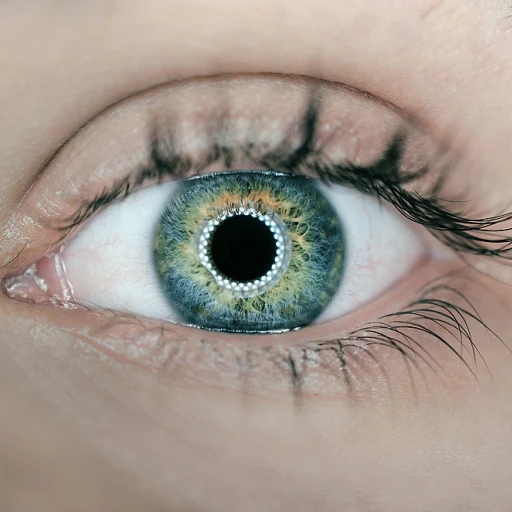Understanding Inorganic Growth in Marketing
Grabbing Growth by the Horns
Inorganic growth in marketing, eh? It's a little like adding a turbo boost to your business. While organic growth comes from nurturing relationships, building communities, and crafting content, the inorganic counterpart relies heavily on strategies like paid advertising, media buying—essentially, anything that fast-tracks your brand's growth in a competitive market. So, what's at the core of this approach? Let's break it down:- Paid Advertising: Consider this your express lane to attracting a broader audience. Platforms like social media and search engines become your best allies, helping you reach those who might just be your next big fans. Ad campaigns, when executed well, bring about impressive growth by improving visibility and increasing web traffic.
- Investment vs. Return: The main deal with inorganic marketing is the upfront investment. But if done right, it pays back in spades. Ads, while having a cost, offer exact targeting. You can pinpoint the audience you wish to reach, making every dollar count.
- Quick Traction: Time can feel like it's slipping away in the fast world of business. Inorganic strategies deliver results swiftly, which is a major plus. Whether it’s a new product launch or making waves during a specific campaign, inorganic efforts give you an edge.
The Role of Paid Advertising
Utilizing Paid Advertising for Maximum Impact
Paid advertising plays a pivotal role in inorganic growth strategies, offering businesses a direct path to reach their target audience quickly and effectively. Unlike organic marketing, which relies on time and consistent effort to build visibility, paid advertising allows brands to immediately position themselves in front of potential customers.
Platforms like Google Ads and social media channels such as Facebook and Instagram provide diverse options for businesses to tailor their ads based on demographics, interests, and behaviors. This level of precision targeting ensures that marketing efforts are not just wide-reaching but also highly relevant to the audience.
Advantages of Leveraging Paid Media
Paid media offers several advantages that can significantly enhance a business's marketing strategy:
- Immediate Visibility: Paid ads can boost a brand's presence on search engines and social media platforms almost instantly, driving immediate traffic to your site.
- Scalability: Businesses can scale their campaigns based on performance metrics, increasing investment in high-performing ads for better returns.
- Targeted Reach: With advanced targeting options, paid advertising ensures that your message reaches the right audience, enhancing the likelihood of conversion.
- Measurable Results: Paid advertising platforms offer comprehensive analytics that allow businesses to track performance and optimize strategies in real-time.
Strategic Considerations for Paid Advertising
While the benefits of paid advertising are clear, businesses must approach this strategy with careful consideration. Budget allocation is a critical factor; overspending without a clear strategy can lead to unsustainable costs. Additionally, businesses should continuously monitor ad performance and make data-driven adjustments to maximize effectiveness.
Moreover, integrating paid advertising with organic strategies can create a holistic approach to marketing, ensuring long-term growth and brand loyalty. This synergy between inorganic and organic efforts is crucial for sustained business success.
For more insights on building effective partnerships and strategies in business, explore building strong HR partnerships for business success.
Benefits of Inorganic Growth Strategies
Advantages of Fast-Paced Growth Strategies
Diving into the world of inorganic marketing strategies, it's crystal clear these methods can fast-track a business's growth. Think quicker audience reach and increased traffic. But let's dig a little deeper. When it comes to paid advertising, a well-thought-out plan captures more eyeballs quickly. Whether it's through social media, search engines, or digital ads, you will notice an uptick in how many people engage with your brand. The right marketing strategy, involving paid marketing and inorganic efforts, means more than just getting noticed. It's about getting noticed by the right people, at the right time. Imagine supercharging your brand's reach. It beats playing the organic waiting game. Sure, organic growth strategies have their place, but inorganic ones break through the noise faster. They allow immediate communication with a target audience hungry for your offerings.Efficient Utilization of Media and Resources
Media and resources are crucial in paid marketing. Paid social and search engine ads help widen the audience quickly, but navigating a cluttered media space can be tricky. Having a robust approach to digital marketing ensures that resources are allocated wisely for the best bang for your buck. Utilizing both organic and inorganic marketing techniques, a brand can establish a solid presence. Organic social media, while budget-friendly, complements the boost from inorganic tactics, creating a harmonious balance between short booms and long term, steady growth.Conquering Your Niche with Paid Media
For businesses that want to plant their flag in a particular niche, inorganic growth strategies pave the way. paid social ads make it easier to pinpoint and communicate directly with a specific audience segment. Moreover, understanding the tight-knit relationship between organic traffic and paid advertising can create a strategy where each supports the other. Combining content marketing with paid strategies can help grow a loyal audience over time. Link: If you wish to know more about how to optimize your marketing strategy, consider checking out Mastering the skills of a strategic CHRO.Challenges and Considerations
Hurdles and Head-Scratchers in Paid Marketing Tactics
In the race to expand reach through inorganic marketing strategies, there's no denying the thrill and promise these tactics can bring. Paid social, media blitzes, and cleverly crafted ads can deliver audience impact—fast. But every shiny tool in the marketing chest has its quirks, challenges, and lessons learned to consider. First off, let’s chat budget. It’s a buzzkill, right? Successfully navigating the world of paid advertising requires careful financial planning. While splurging on ads can deliver sudden bursts in traffic and brand awareness, relying too heavily on them can swiftly drain resources. It's all about balance. Time is a stealthy factor, slipping by unnoticed while you're caught up in developing growth strategies. Paid campaigns demand attention. Constant monitoring and tweaking of ads is essential to maximize ROI (Return on Investment) and to keep targeting on point. The digital marketing arena humming with competitions means that if you blink, you might just miss the boat. Now, let’s talk results. Folks often fall into the trap of expecting immediate gains from inorganic methods without considering the slow-burn merits of organic marketing. There's value in patience, as organic traffic and social efforts can shore up a brand's reputation, bolstering the spikes achieved through paid means. Marrying these two approaches can enhance both short-term gains and sustained visibility. Then there are search engines. Inorganic growth through paid ads is often at the mercy of changing algorithms and regulations. Staying updated with these changes adds another layer of complexity. It's all about playing the field smartly. Lastly, consider the audience. Paid advertising can indeed bring in attention, but if the message doesn’t resonate, it's just money tossed into the wind. Understanding your target audience’s preferences, needs, and behaviors is key. Get to know their world, and how your brand fits into it. While it can be tricky charting through these waters, the potential payoff of a well-executed strategy is undeniable. As with many things, those who triumph are those who adapt and learn from each hurdle, turning challenges into growth opportunities.Integrating Inorganic and Organic Strategies
Mixing organic and inorganic marketing strategies isn't just smart; it's essential for a nimble business. It’s like serving a balanced meal to your audience; you need both greens and protein to keep them satisfied. Organic efforts, like authentic content marketing and engaging with followers on social media, create a rich foundation where your brand feels like more than just a company. It shapes your company's reputation over time, building trust and connection with your audience.
But what happens when your organic traffic doesn't hit the target audience you need right now? Enter inorganic strategies. Think of it like a turbo boost in a video game, providing a quick burst of energy that helps you move further, faster.
Creating a Balanced Strategy
Some folks might ask, "Why not just stick with the organic route?" The truth is, blending both approaches allows you to maximize reach and engagement. It ensures that while you're nurturing those organic relationships, you're also broadening your content marketing net to capture more of those potential leads with paid advertising.
With data-driven approaches, businesses can target specific groups using paid media, search, and paid social ads. This way, you’re not just throwing ideas into the void hoping something sticks. Instead, this adds precision to your marketing strategy. It can be particularly timely around major product launches or events when you need to ensure the message lands on the right people's screens.
Complementary Benefits and Synergy
Organic growth and paid marketing efforts complement each other smoothly. Organic social efforts improve your brand's credibility and engage your audience with valuable content, while inorganic strategies ensure you reach the right eyeballs at the right time. This dual approach allows a brand to maintain a baseline of continuous traffic and engagement, while still being ready to capitalize on new opportunities as they spring up.
Integrating these strategies gives you room to test what blends work. Whether that's trialing which combination of ads drives more social media engagement or seeing how search engine placements boost brand awareness when paired with organic marketing efforts.
In blending these approaches, businesses are not just waiting for growth, they’re actively steering their marketing strategy towards where it needs to go. If you're ready to start building a nimble marketing strategy, now’s the time to give this dual approach a shot and reap the benefits.




